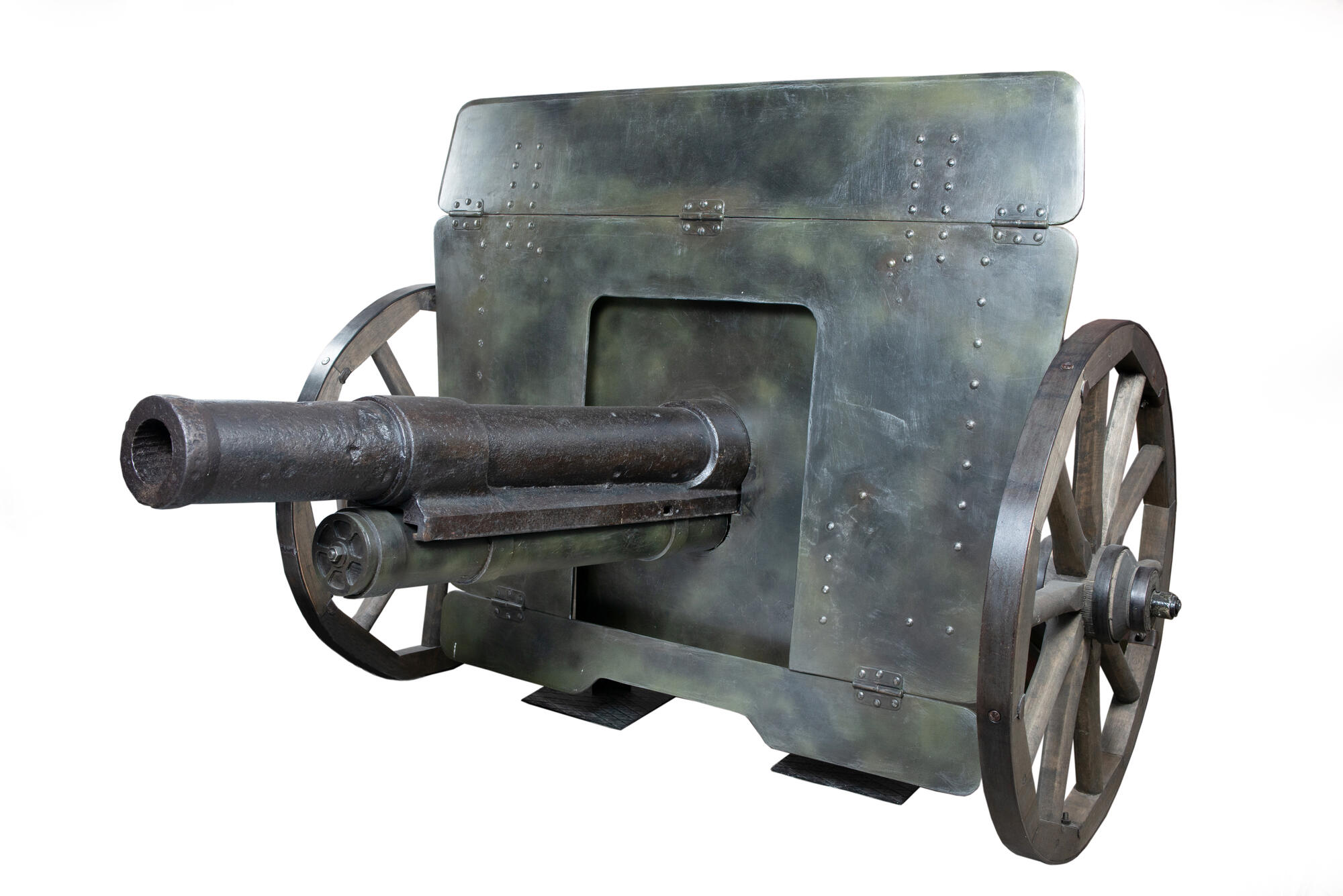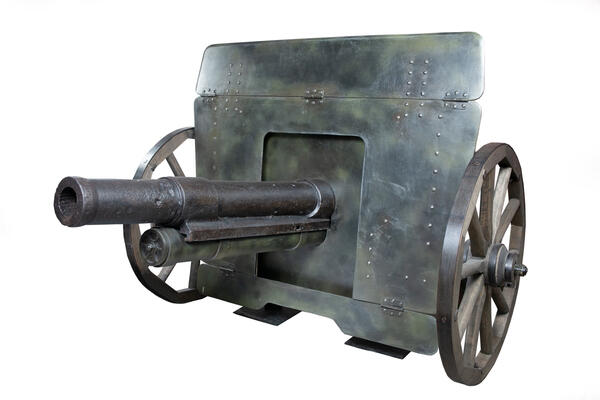The 3-inch field quick-firing gun M1902, also known as “three-incher, ” was developed at the Putilovsky plant in Saint Petersburg by the designers L. Bishlyak, K. Sokolovsky, and K. Lipnitsky, and the engineer N. Zabudsky.
They equipped the gun with many useful technological advances, for example, with recoil devices, traverse and elevation tracking mechanisms, and an easy-to-open interrupted screw breech. Moreover, the cannon got a sight with a longitudinal level, lateral corrections mechanism, and gun train order with two movable diopters, which allowed firing from closed positions and direct laying.
The field quick-firing gun M1902 was the main weapon of the Russian army artillery. It was similar in technical characteristics to the French and German guns of 75 and 77 millimeters and superior to the Austrian 76.5 mm gun.
The guns of such type were widely used during the Russo-Japanese War and World War I. This weapon was capable of both direct laying and high-angle fire. The Austrian soldiers called the “three-incher” a “Scythe of Death” for its killing power when fired with shrapnel 一 an artillery explosive shell filled with round bullets.
By January 1, 1918, a total of 8529.76 mm divisional gun model 1902 was made. During World War I, some batteries armed with the “three-inchers” were equipped with Ivanov’s mounts. They allowed for shelling air targets. The mounts were metal bases with a circular rail at the top, along which the upper frame rotated on four rollers.
By the end of 1917, the production of cannons almost ended. Soon it had to be resumed due to the Civil war. At that time, the displayed gun was in the Red Army units, but in 1918, when the soldiers retreated from Omsk, they drowned it in the Om. It was raised almost 100 years later, accidentally discovered during repair works.
They equipped the gun with many useful technological advances, for example, with recoil devices, traverse and elevation tracking mechanisms, and an easy-to-open interrupted screw breech. Moreover, the cannon got a sight with a longitudinal level, lateral corrections mechanism, and gun train order with two movable diopters, which allowed firing from closed positions and direct laying.
The field quick-firing gun M1902 was the main weapon of the Russian army artillery. It was similar in technical characteristics to the French and German guns of 75 and 77 millimeters and superior to the Austrian 76.5 mm gun.
The guns of such type were widely used during the Russo-Japanese War and World War I. This weapon was capable of both direct laying and high-angle fire. The Austrian soldiers called the “three-incher” a “Scythe of Death” for its killing power when fired with shrapnel 一 an artillery explosive shell filled with round bullets.
By January 1, 1918, a total of 8529.76 mm divisional gun model 1902 was made. During World War I, some batteries armed with the “three-inchers” were equipped with Ivanov’s mounts. They allowed for shelling air targets. The mounts were metal bases with a circular rail at the top, along which the upper frame rotated on four rollers.
By the end of 1917, the production of cannons almost ended. Soon it had to be resumed due to the Civil war. At that time, the displayed gun was in the Red Army units, but in 1918, when the soldiers retreated from Omsk, they drowned it in the Om. It was raised almost 100 years later, accidentally discovered during repair works.



